The self-publicist whose medical text books caused a stir
- Published
Published nearly 500 years ago, Andreas Vesalius's medical text books occupy an important place in scientific history. Intricate art, unlike anything that had been seen before, sits alongside detailed text that sought to change the way bodies were dissected post mortem.
Cambridge University Library, external holds well-preserved copies of the Fabrica, and its companion piece the Epitome - publications that helped Vesalius realise his personal ambitions in the 16th Century court of the Holy Roman Empire.
Click on the photo film below - and hear science historian Sachiko Kusukawa explain how the 28-year-old physician was man on a mission.
Scroll down further - and see some of the detailed anatomical artwork that caused such a stir.
Andreas Vesalius - born in Flanders in 1514 - was an ambitious young man, not shy of self-publicity.
He came from a family of doctors who served royalty. But his father was regarded as illegitimate - and had only managed to become an apothecary, an early form of pharmacist.
With family lineage crucial for career prospects, Andreas's hopes of becoming a personal physician to the Holy Roman Emperor, Charles V, would not be easy to fulfil.
But after university, undeterred, Vesalius made a bold statement. He published two books on the workings of the human body - the Fabrica, and its colourful companion piece, the Epitome.
Incredibly innovative for the time, this layered paper manikin - an early form of pop-up book - is in the Epitome.
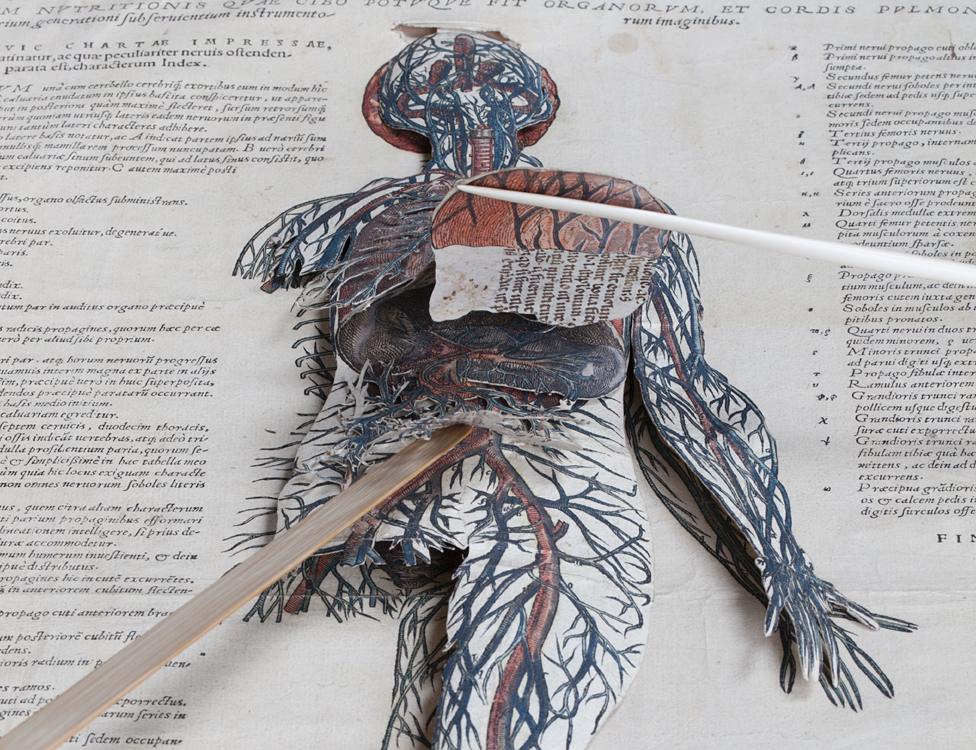
Vesalius's sharp and crisp images of human anatomy have survived the centuries. The paper is strong - made from pulped linen.
The depicted veins and organs have remained in such good condition, because the publishers strengthened the front images by pasting old manuscripts behind, as shown below.
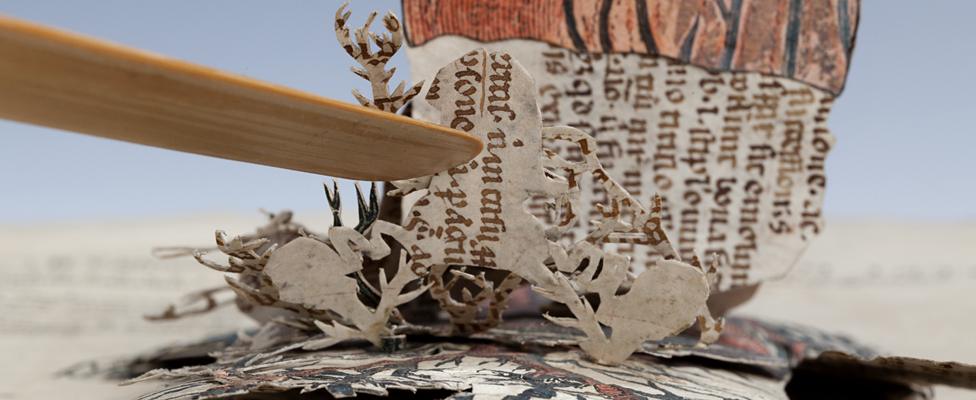
Below are the two front cover images from the Fabrica (left) and the more colourful Epitome.
More or less identical, except for the colours on the right, they show that Vesalius was not afraid to put himself at the centre of the action.
At the top, are three weasels in his family coat of arms. The word Vesalius is a Latinised version of weasel.
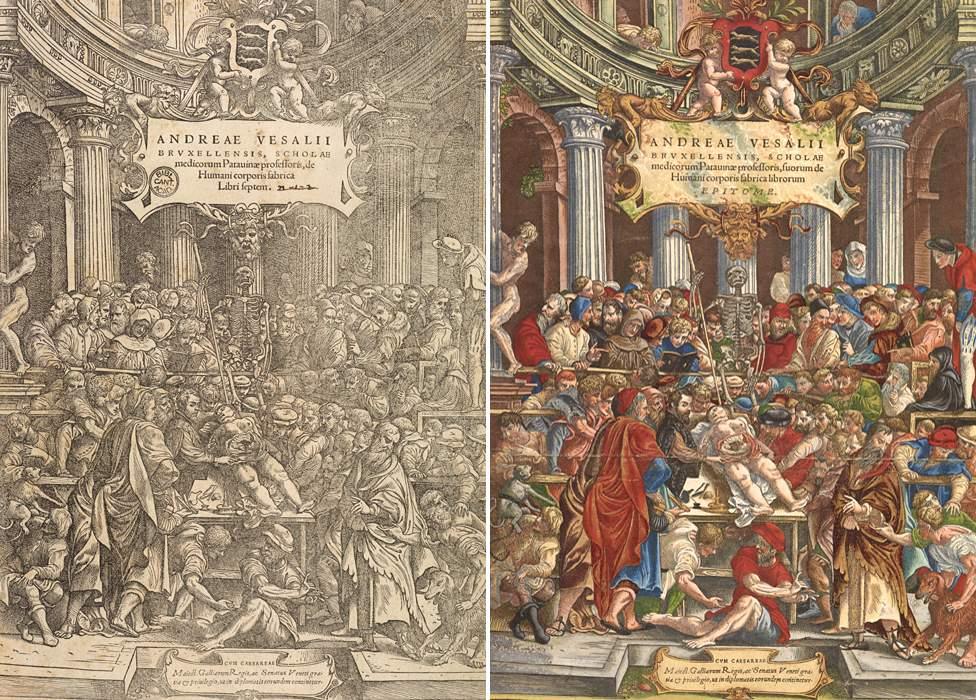
And in the middle, Vesalius himself - conducting a dissection of a female body. It is difficult to see, but one of his hands is pointing upwards - towards God.
Contemporary and classical figures surround him - including the 2nd Century Greek medical scholar Galen, in red and blue robes. It is thought that Aristotle is to the right, in brown robes.
The personal message from Vesalius was clear - his dissection talents were so impressive that even the ancients looked on with respect.
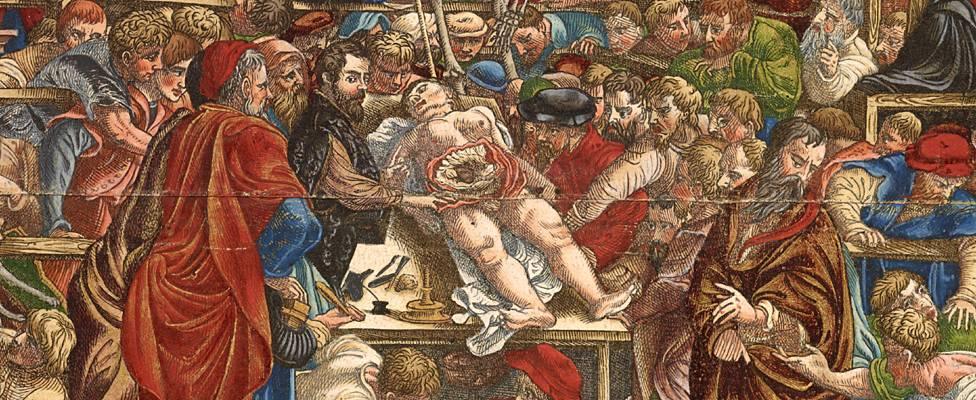
Previous text books had been smaller and with more crude images, but these publications - from 1543 - were unlike anything that anyone had seen before.
Inside, Vesalius chose to go against the medical trends of the time, focusing instead on the teachings of Galen from more than 1200 years before.
However, because Vesalius was able to dissect human bodies - unlike Galen who had only cut open animal corpses - he went on to make his own discoveries, superseding Galen's work.
In the early 16th Century, most body dissections began with the stomach - as that was the first organ to putrefy.
But for Vesalius, like Galen, bones were the foundation of the body, and as a result, the books are filled with intricate skeletal artwork.
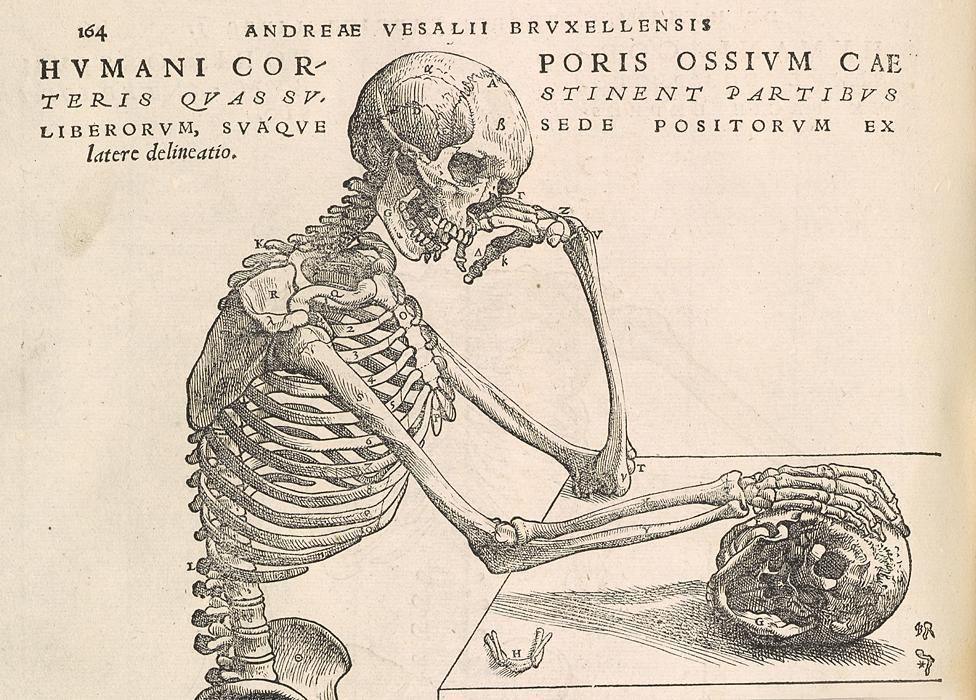
The artists commissioned by Vesalius were talented.
The images were not drawings or engravings, but instead created using woodblock techniques - where depictions were carefully whittled from, or carved out of, wood and then sent for printing.

This series of skeletons shows the human body in detail - with each pose revealing how muscles work as the body moves.
But they are also artistically beautiful - with a landscape backdrop.
In the book, Fabrica, they are pages apart - but when viewed in sequence together the landscape cleverly matches up to present one constant vista.


Keen to impress, Vesalius dedicated the Fabrica to Charles V - and the Epitome to his son, the future King of Spain, Philip II.
He presented the Fabrica to the Emperor personally - it was the ultimate curriculum vitae.
Within a year, he was employed in imperial service. His professional ability - and tremendous personal confidence - had helped make his name.
All images subject to copyright. Images courtesy University of Cambridge Library.
Music in photo film courtesy KPM Music. Production by Paul Kerley.

Related:
Vesalius exhibition, external - Cambridge University Library
Full digitised version of Fabrica, external Cambridge Digital Library
Andreas Vesalius - BBC History
You might also like:
12 data maps that sum up London
When soldiers roamed around Stonehenge
Subscribe to the BBC News Magazine's email newsletter to get articles sent to your inbox.